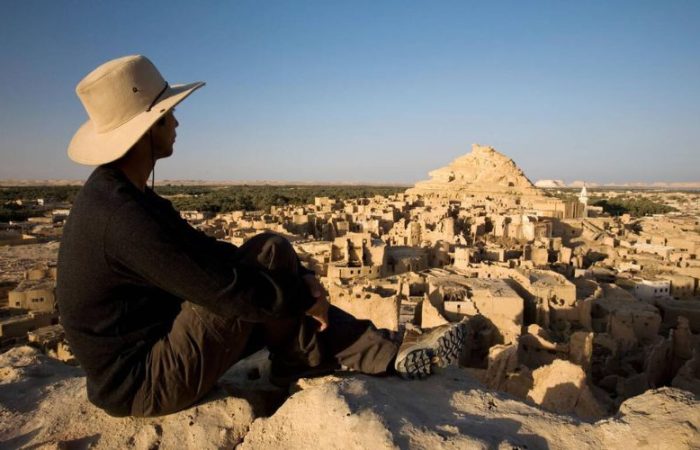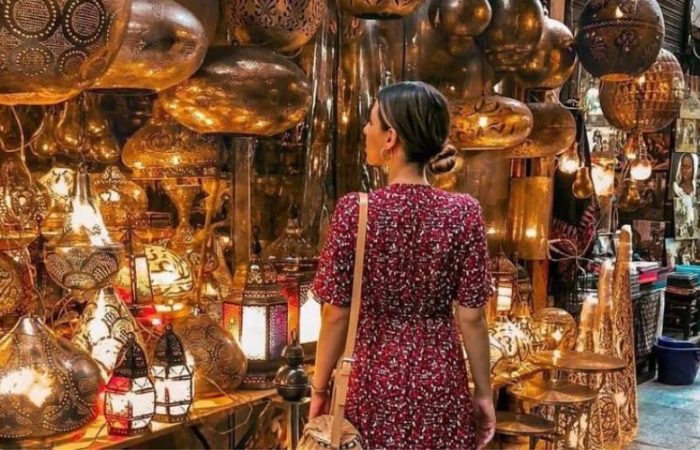Egyptian mummies facts reveal far more than ancient artifacts, these remarkably preserved bodies serve as essential time capsules that illuminate ancient Egyptian civilization. Real Egyptian mummies provide unique insights into ancient Egypt’s religious beliefs, cultural practices, daily life, and sophisticated medical knowledge. From deciphering hieroglyphics on mummy coffins to understanding complex social structures, mummies in ancient Egypt have been instrumental in uncovering the mysteries of this fascinating civilization.
The ancient Egyptian mummification process has captivated researchers and history enthusiasts for centuries. This sacred ritual, practiced for over 3,000 years, stood at the heart of Egyptian society and reflected profound beliefs about life, death, and the afterlife. Whether pharaoh mummies or commoner remains, mummification was a revered practice that united ancient Egyptians in their quest for eternal life.
What is Mummification? Ancient Egyptian Mummification Explained

The Egyptian Mummification Process Definition
Ancient Egyptian mummification was the elaborate process of preserving dead bodies to ensure immortality. This mummification process in ancient Egypt involved numerous meticulous steps designed to prevent decomposition and prepare the deceased for their journey to the afterlife.
How Egyptian Mummies Were Made Step by Step
The ancient Egyptian mummification process step by step included:
1- Brain Removal: Embalmers used a special hook inserted through the nose to extract the brain, a surprising Excerebration ( Ancient Egyptian mummification Type) that shows their anatomical knowledge.
2- Organ Extraction: Internal organs were carefully removed and placed in canopic jars (Egyptian mummification jars), except the heart, which ancient Egyptians believed was needed for judgment in the afterlife.
3- Desiccation with Natron: The body was covered in natron salt mummification, a natural salt mixture that drew out moisture over 40 days.
4- Preservation Treatment: After drying, embalmers applied oils, resins, and spices used in Egyptian mummification Processes to preserve tissues and add pleasant aromas.
5- Wrapping Process: The ancient mummy was carefully wrapped in linen bandages, with protective amulets placed between layers. This answers the question “what are mummies wrapped in?” Fine linen cloth was the primary material.
6- Burial Ritual: The completed Egyptian mummy was placed in a decorated sarcophagus and entombed with burial goods for the afterlife journey.
Mummification Tools and Materials Used in Ancient Egypt
Ancient Egyptian embalmers used specialized tools for mummification in ancient Egypt, including:
- Bronze hooks for brain removal.
- Ceremonial knives for incisions.
- Natron salts for desiccation.
- Linen wrappings from Egyptian textile production.
- Resins and oils for preservation.
- Canopic jars for organ storage.
Significance of Mummification in Egyptian Religious Beliefs
Egyptian mummification meaning extended far beyond physical preservation. Ancient Egyptians believed the soul (ka and ba) required an intact body to navigate the afterlife successfully. Mummification in Egyptian civilization was deeply intertwined with religious beliefs about judgment, resurrection, and eternal life in the Field of Reeds.
The god of mummification in Egypt was Anubis, the jackal-headed deity who oversaw embalming and guided souls through the underworld. This connection
Origins and History of Mummification in Egypt

When Did Egyptian Mummification Start?
The history of mummification in ancient Egypt dates back approximately 5,500 years. The first mummification in Egypt occurred around 3500 BCE, though early examples were accidental; natural mummification resulted from Egypt’s hot, dry desert climate, preserving bodies buried in sand.
Evolution of Ancient Egyptian Mummification Techniques
Mummification techniques in ancient Egypt evolved significantly over millennia:
- Pre-Dynastic Period (3500-3100 BCE): Natural mummification through desert burial created the earliest mummies Egypt.
- Old Kingdom (2686-2181 BCE): Deliberate mummification began, primarily for royalty and nobility. Basic organ removal and wrapping techniques developed.
- Middle Kingdom (2055-1650 BCE): The mummification process became more sophisticated, with improved preservation methods and wider accessibility.
- New Kingdom (1550-1077 BCE): Peak of mummification art. The Egyptian mummification process reached its most elaborate form, producing the best preserved Egyptian mummies we study today.
- Late Period (664-332 BCE): Mummification in Egypt became available to more social classes, though quality varied based on affordability.
Development Timeline: Mummification in Ancient Egypt Timeline
This mummification ancient Egypt timeline shows continuous refinement of techniques, reflecting growing anatomical knowledge and cultural importance. The ancient Egyptian mummification process pdf documents available today detail these evolutionary
Types of Egyptian mummies

1- Royal Mummies of Pharaohs and Egyptian Nobility
Pharaoh mummies represent the pinnacle of ancient Egyptian mummification. Famous mummies from ancient Egypt like Tutankhamun’s mummy and Ramses II mummy, demonstrate the extraordinary care lavished on royal individuals. These mummified Egyptian pharaohs received the most elaborate Egyptian mummification rituals, including:
- Extended 70-day mummification processes of Egypt.
- Highest quality materials and preservation chemicals.
- Elaborate burial chambers in pyramids or the Valley of the Kings.
- Extensive funerary goods and treasures.
- Multiple coffins including gold sarcophagi.
The list of Egyptian mummies in museums worldwide features numerous royal mummies that continue fascinating researchers and visitors alike.
2- Commoner Mummies and Their Societal Significance
Ancient Egyptian mummification wasn’t exclusive to royalty. Mummies in Egypt included commoners who could afford the Egyptian mummification process. While less elaborate than pharaoh mummy procedures, commoner mummification still held profound religious and social significance, offering hope for the afterlife to broader Egyptian society.
Different mummification ancient Egypt processes existed based on affordability:
- Premium mummification (similar to royal treatment)
- Standard mummification (organs removed, basic preservation)
- Economy mummification (minimal intervention, just wrapping)
3- Animal Mummies and Their Religious Purpose in Egyptian Mythology
Egyptian mummified animals represent a unique aspect of ancient Egyptian culture. The Egyptians mummified millions of animals, particularly those considered sacred:
- Egyptian Mummified Cats: Sacred to the goddess Bastet, cat mummies were popular offerings.
- Mummified Egyptian Pharaohs’ Pets: Dogs, birds, and other beloved animals were mummified to accompany owners to the afterlife according to the ancient Egyptian afterlife beliefs.
- Sacred Birds: Ibises (sacred to Thoth) and falcons (sacred to Horus) were mass-mummified at specialized centers.
- Egyptian Mummified Crocodiles: Sacred to Sobek, these impressive specimens can be seen in museums today like the Egyptian Museum in Cairo city & the Crocodile Museum in Kom Ombo.
This practice of mummifying animals in Egypt demonstrates the interconnection between the human and divine realms in Egyptian
Secrets of the mummification process

Fact 1: The ancient Egyptian mummification process brain removal was performed through the nose using a long bronze hook (embalmers literally scrambled and extracted brain tissue this way!).
Fact 2: What were mummies wrapped in? A single mummy was wrapped in linen bandages. The mummification wrapping process alone took 15 days.
Fact 3: Real mummy photos show that the heart was intentionally left inside the body, as Egyptians on Ancient Egypt believed it was needed for the weighing of the heart ceremony in the afterlife ( Weighing of Souls).
Fact 4: Natron, the key desiccating agent, came from dry lake beds. This natural sodium compound was so effective that it remains central to understanding ancient Egyptian mummification facts for kids studying this topic.
Fact 5: Are mummies real? Absolutely! Thousands of authentic mummies exist in museums worldwide. Real Egyptian mummies have been scientifically studied using CT scans and DNA Profiling.
Fact 6: The best preserved Egyptian mummy specimens retain skin, hair, and even internal organs in remarkable condition, offering unprecedented insights into ancient health and disease.
Fact 7: Egyptian mummy images reveal elaborate death masks and jewelry. King Tut’s famous gold mask weighed 22.5 pounds!
Fact 8: Mummification facts show the process was dangerous work, embalmers often suffered from infections and respiratory issues from chemical exposure.
Fact 9: Famous mummies in Egypt include not just pharaohs but also the mummy of Hatshepsut, Egypt’s powerful female pharaoh.
Fact 10: Modern research reveals Egyptian mummies contain traces of nicotine and cocaine, sparking debates about ancient trade routes, though these findings remain controversial.
Fun Facts About Egyptian Mummies for Kids
25 Interesting Facts About Mummies suitable for young learners include:
- Ancient Egyptians believed mummies could magically come alive in the afterlife.
- Egyptian Mummy wrappings sometimes stretched over a kilometer long.
- The god Anubis, protector of mummies, had a jackal head.
- Red ochre was used to color female mummies‘ skin, while male mummies received darker tones.
- Wealthy mummies wore elaborate jewelry and amulets for protection.
Interesting Facts About Egyptian Mummification Process
- Brain Removal Egyptian Mummification: Why was the brain removed but not preserved? Ancient Egyptians considered the brain unimportant; they believed thinking occurred in the heart!
- Egyptian Mummification Heart Significance: The heart remained in place because it would be weighed against the feather of Ma’at (truth) to determine if the deceased lived a worthy life.
- Mummification Process Pictures: Historical artwork depicts embalmers as priests wearing Anubis masks, performing sacred rituals during the mummification ceremony.
- How Long Did the Egyptian Mummification Process Take? The complete process required approximately 70 days (40 days for drying with natron, plus 30 days for wrapping and final preparations).
Unconventional Mummification Practices and Surprising Discoveries
Alive Mummies in Real Life? While horror movies suggest otherwise, no evidence exists of deliberate living mummification in Egypt (though some cultures practiced self-mummification).
Mummy Real or Fake? Unfortunately, Victorian-era “mummy unwrapping parties” destroyed numerous authentic specimens. Today, is mummy real authentication uses scientific methods like radiocarbon dating and CT scanning.
Egyptian Mummified Remains Communities of Descent: Recent research explores whether mummified remains should return to Egypt or remain in international museums, an ongoing ethical debate.
Preservation: How Egyptian Mummies Lasted Thousands of Years

Factors Contributing to Mummy Preservation
- Egypt’s Desert Climate: The hot, arid environment naturally inhibited bacterial growth and decay.
- Tomb Construction: Sealed Egypt burial chambers protected mummies from moisture, insects, and disturbance.
- Mummification Chemistry: Natron salt, resins, and oils created antimicrobial environments preventing decomposition.
- Lack of Air Exposure: Wrapped mummies in Egypt with limited oxygen exposure experienced significantly slower degradation.
Well-Preserved Egyptian Mummies and Their Research Value
The best preserved mummy in the world specimens provide extraordinary scientific value:
Preserved Egyptian Mummy Examples:
- Ramses II: The mummy of Ramses II shows arthritis, dental issues, and evidence of battle wounds.
- Tutankhamun: The mummy of Tutankhamun revealed he suffered from malaria and a club foot
- The Screaming Mummy: The screaming mummy of Pentawer (also Pentawere and Pentaweret) was a controversial specimen suggesting possible suffocation.
Real Egyptian Mummy Studies Reveal:
- Ancient diseases and their prevalence.
- Dietary patterns through bone and tissue analysis.
- Genetic relationships between royal families.
- Surgical procedures and medical treatments.
- Causes of death and life expectancy.
Modern Preservation and Display: Egyptian Mummies Museum Exhibits
Egyptian Mummies on Display worldwide include:
| Museum | Key Highlights |
|---|---|
| Egyptian Museum, Cairo | Displays a variety of animal mummies, including rams, crocodiles, baboons, and other ancient mummified animals. |
| National Museum of Egyptian Civilization (NEMC) | Houses the Royal Mummies Hall, featuring pharaohs such as Seqenenre Tao, Ahmose Nefertari, Queen Tiye, Meritamun, Amenhotep I, Amenhotep II, Amenhotep III, Thutmose I, Thutmose II, Thutmose III, Thutmose IV, Hatshepsut, Seti I, Seti II, Merenptah, Siptah, Ramses II, Ramses III, Ramses IV, Ramses V, Ramses VI, and Ramses IX. |
| British Museum | Features extensive Egyptian mummy collections, including Ginger, a 5,500-year-old naturally mummified body. |
| Smithsonian Egypt Collections | Displays mummies with comprehensive educational context. |
| Louvre Museum | Contains royal and commoner mummies with elaborate sarcophagi. |
Pharaoh Mummy Museum Egypt attractions offer visitors remarkable opportunities to view these ancient preserved remains while learning Egyptian mummies facts for students.
Scientific Research: Mummies as Archaeological Treasures

What Scientists Learn from Egyptian Mummy Studies
DNA of Mummies in Egypt: Genetic analysis reveals ancestry, family relationships, and population movements across ancient Egyptian history.
Disease Detection: CT scans of mummies identify tuberculosis, malaria, arterial disease, cancer, and other conditions affecting ancient populations.
Dietary Analysis: Bone and tissue studies reveal what ancient Egyptians ate, including bread, beer, dates, fish, and meat consumption patterns.
Egyptian Mummies Aromas Analysis: Chemical analysis of resins and oils used in mummification provides insights into ancient trade networks and botanical resources.
Mummy Facial Reconstruction: Modern technology recreates faces of ancient Egyptians, bringing these individuals “back to life” visually.
Egyptian Mummies and Modern Science Techniques
Egyptian Mummy X-Ray Studies: Non-invasive imaging reveals internal preservation, amulets, jewelry, and health conditions without unwrapping.
Egyptian Mummies 3D Scans Chicago: Advanced scanning creates detailed digital models for research and education.
Egyptian Mummy DNA Results: Genetic sequencing maps relationships between royal families and tracks genetic diseases.
Egyptian Mummies Exploring Ancient Lives: Comprehensive exhibitions combine scientific findings with historical context.
Examination of Mummies: Cultural and Social Insights
Beyond medical findings, mummies in ancient Egypt facts reveal:
- Social hierarchies based on burial elaboration.
- Religious belief evolution over dynasties.
- Artistic styles and craftsmanship standards.
- Economic conditions affecting mummification accessibility.
- Gender roles and power dynamics (especially female pharaohs like Hatshepsut).
Famous Egyptian Mummies: Icons of Ancient Civilization
King Tutankhamun: The Boy King’s Mummy

King Tut Mummy Discovery: Howard Carter‘s 1922 discovery of Tutankhamun‘s virtually intact tomb in the Valley of the Kings represents archaeology’s most famous find. The famous Egypt mummy Tutankhamun captured worldwide imagination.
Egyptian Mummy Tutankhamun Facts:
- Died around age 19 (circa 1323 BCE).
- Suffered from genetic disorders due to royal inbreeding.
- Walked with a cane due to club foot and bone disease.
- His mummy underwent extensive scientific examination revealing health issues.
- The tomb contained over 5,000 artifacts, including his iconic gold mask.
Tutankhamun Mummy Photos and exhibits continue drawing millions of visitors, making him the most recognizable ancient Egyptian mummy worldwide.
Pharaoh Ramses II Mummy

Ramses the Great Mummy: Ramsses II, who ruled for 66 years (1279-1213 BCE), left an unmatched legacy. His well-preserved mummy provides remarkable insights into ancient Egyptian health and longevity.
Famous Egyptian Mummy Ramses II Details:
- Died in his 90s, exceptional for ancient times.
- Red hair (possibly from henna treatment).
- Severe dental issues and arthritis.
- Battle scars and evidence of multiple old injuries.
- His mummy received a French passport in 1976 for conservation treatment in Paris!
Ramses II Mummy Museum: His remains now rest in the National Museum of Egyptian Civilization in Cairo, where visitors can view this legendary pharaoh.
Queen Hatshepsut Mummy

Mummy of Hatshepsut Discovery: Egypt’s most successful female pharaoh (ruled 1479-1458 BCE) had her mummy identified in 2007 through DNA matching with her wet nurse’s mummy.
Hatshepsut Mummy Facts:
- Overweight with diabetes.
- Suffered from bone cancer.
- Had a dental abscess that may have caused her death.
- Her stepson Thutmose III attempted to erase her legacy.
- DNA analysis confirmed her royal lineage.
Queen Hatshepsut Mummy Significance: Her discovery proved women could rule as pharaohs, challenging assumptions about ancient Egyptian gender roles.
Other Notable Mummies from Ancient Egypt
Real Ancient Egyptian Mummy Specimens:
- Seti I Menmaatre: Son of Ramses I and Sitre In & Ramses II’s father, one of the best preserved royal mummies.
- Amenhotep III: Grandfather of Tutankhamun, shows signs of obesity and dental disease.
- The Screaming Mummy: Son of Pharaoh Ramesses III, Pentawer prince with mouth frozen open, possibly strangled.
- Yuya and Thuya: Tutankhamun’s great-grandparents, remarkably preserved.
- The ancient Egyptian Gebelein Man died (Ginger) : A 5,500-year-old naturally mummified body showing the earliest preservation.
Egyptian Mummies in Popular Culture

Influence on Literature, Film, and Entertainment
Egyptian mummies have transcended their historical roots to become pop culture icons:
Classic Literature:
- “The Mummy!” by Jane Webb (1827) – Early mummy fiction.
- Works by Edgar Allan Poe featuring Egyptian themes.
- Adventure novels incorporating mummy curses.
Film and Television:
- “The Mummy” franchise (1932, 1999, 2017).
- Documentaries exploring Egyptian mummies history.
- Educational programs on Egyptian mummification for kids.
Video Games:
- “Assassin’s Creed Origins” – Set in ancient Egypt.
- Educational games teaching about mummification process.
The Mummy Egyptian Cultural Impact: These representations have made Egyptian mummies recognizable worldwide, though often perpetuating misconceptions.
Misconceptions and Stereotypes Surrounding Mummies
Common Myths About Real Mummies:
Myth 1: “Mummy’s Curse” – While Tutankhamun’s discovery coincided with some deaths, no scientific evidence supports curses. The “curse of Tutankhamun” was largely media sensationalism.
Myth 2: “Mummies Walk” – Despite horror movie tropes, ancient mummies remain very dead. Alive mummies in real life don’t exist outside fiction.
Myth 3: “All Mummies Were Pharaohs” – Actually, commoner mummies vastly outnumbered royal ones. Mummification Ritual became relatively accessible to middle-class Egyptians.
Myth 4: “Perfect Preservation Always” – While some mummies are remarkably preserved, many are fragmentary or poorly preserved depending on burial conditions.
Myth 5: “Mummification Was Quick” – The complete Egyptian mummification process required 70 days of careful, ritualistic work.
Understanding Real Mummies vs. Fiction
To appreciate Egyptian mummies facts authentically:
- Study scientifically verified information.
- Visit museums with authentic specimens.
- Watch educational documentaries rather than horror films.
- Understand the religious and cultural context.
- Respect mummies as human remains deserving dignity.
Pictures of Mummies in Real Life versus movie depictions show dramatic differences, real mummies appear dried, fragile, and brown rather than wrapped, mobile monsters.
Mummification Around the World: Egyptian vs. Other Cultures
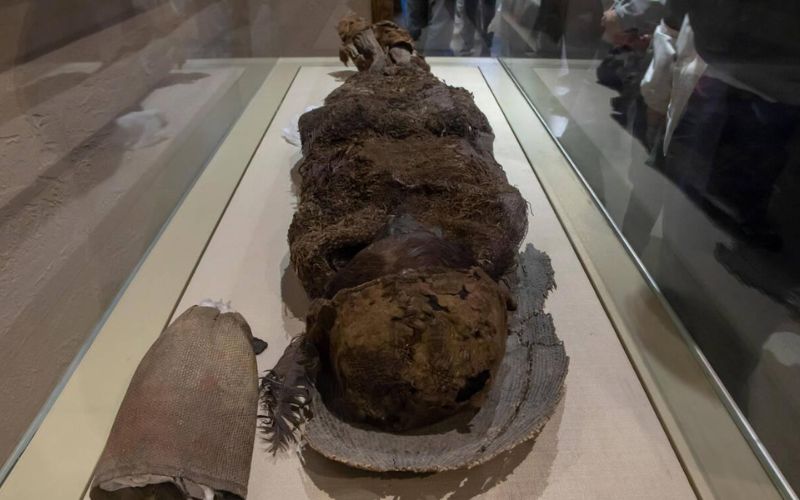
Was Mummification Only in Egypt?
Mummification outside Egypt: While Egypt perfected the art, various cultures practiced body preservation:
Natural Mummification:
- Ötzi the Iceman (Italy/Austria) – 5,300 years old
- Chinchorro mummies (Chile) – Predating Egyptian mummies by 2,000 years
- Bog bodies (Northern Europe) – Naturally preserved in peat
Intentional Mummification:
- Chinese Tarim mummies (Xinjiang region)
- Incan mummies (Andes mountains)
- Guanche mummies (Canary Islands)
- Buddhist self-mummification (Japan)
Non-Egyptian Mummies vs. Egyptian Methods: Egyptian mummification remains the most sophisticated, scientifically advanced preservation system of the ancient world.
Unique Aspects of Egyptian Mummification
What made Egyptian mummification unique:
- Religious integration with complex afterlife beliefs.
- Systematic removal and preservation of specific organs.
- Use of natron for chemical desiccation.
- Elaborate wrapping rituals with protective amulets.
- Detailed funerary texts and spells.
- Canopic jar system for organ preservation.
- Professional embalmers as specialized craftsmen.
Ethical Considerations: Mummies in Modern Times
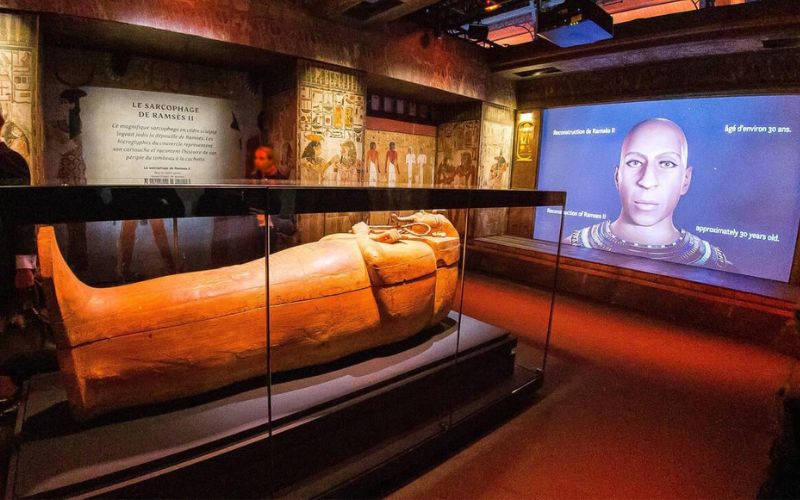
Do Mummies Belong in Museums? Facts and Perspectives
Ongoing Debates:
Arguments for Museum Display:
- Educational value for millions of visitors.
- Scientific research opportunities.
- Protection from looting and destruction.
- Cultural heritage preservation.
- Cross-cultural understanding.
Arguments Against:
- Human remains deserve respectful burial.
- Colonial-era acquisitions lack proper consent.
- Sacred objects should remain in Egypt.
- Display disrespects ancient religious beliefs.
- Tourism commodifies human remains.
Egyptian Mummies Museum Ethics: Modern museums increasingly provide cultural context, ensure respectful display, and collaborate with Egyptian authorities on repatriation discussions.
Repatriation and Cultural Heritage
Egypt’s Perspective: The Egyptian government actively pursues return of illegally exported artifacts and mummies, viewing them as national treasures.
Recent Developments:
- Several museums have returned mummified remains.
- Improved international cooperation on heritage protection.
- Balanced approaches allow research while respecting cultural ownership.
Scientific Research vs. Respect for the Dead
Modern Egyptology balances research needs with ethical treatment:
- Non-invasive scanning instead of unwrapping.
- Proper storage and conservation.
- Consultation with Egyptian authorities.
- Public education about cultural context.
- Acknowledgment that mummies in Egypt were once living people.
Planning for Egyptian Mummy Guided Tours
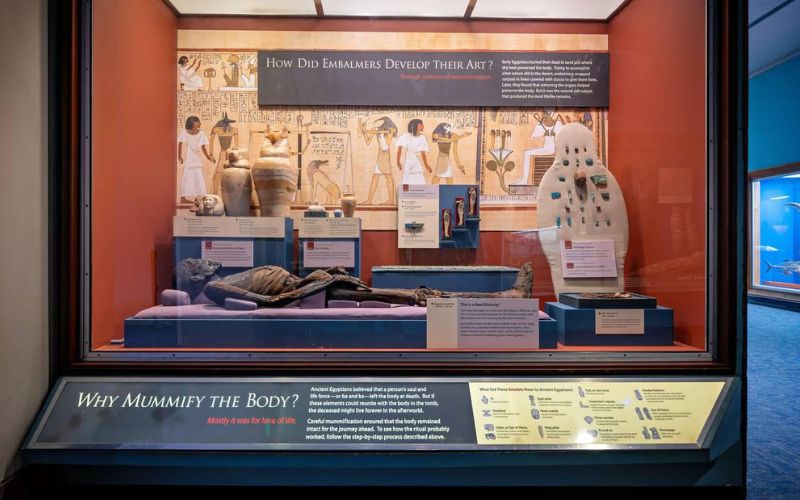
Visiting Egyptian Mummies in Museums
Best Museums to See Egyptian Mummies:
In Egypt:
- National Museum of Egyptian Civilization, Cairo: Home to 22 royal mummies, including Ramses II.
- Egyptian Museum, Cairo: Extensive mummy collections, including animal mummies (though many transferred to Egypt new museums).
- Luxor Museum: Features mummies in excellent condition with modern displays.
- Mummification Museum, Luxor: Dedicated specifically to mummification processes and tools
International Museums:
- British Museum, London: Outstanding Egyptian mummies British Museum collection.
- Louvre Museum, Paris: Royal mummies and elaborate coffins.
- The Museo Egizio (or Egyptian Museum), Turin: Second-largest Egyptian collection outside Egypt.
- Metropolitan Museum, New York: Comprehensive ancient Egypt sections.
- Field Museum, Chicago: Features Egyptian mummies on display.
Egyptian Mummy Exhibits typically include:
- Actual mummified remains.
- Sarcophagi and coffins.
- Canopic jars and Grave goods.
- Interactive displays explaining the mummification of Egyptians.
- CT scan images showing internal mummy preservation.
- Historical context and archaeological information.
Egypt Travel: Experiencing Mummification History Firsthand
Visit the Valley of the Kings: While most mummies have been moved to museums, ancient Egyptian tombs showcase burial contexts and elaborate decoration.
Explore Ancient Burial Sites: Saqqara, Giza, and the Theban Necropolis in Luxor offer insights into burial practices.
Mummification Museum Luxor: Provides comprehensive education on tools, techniques, and religious significance.
Educational Resources for Learning More
For Students:
- Egyptian Mummies Quizlet: Flashcards and study materials.
- Egyptian Mummies Quizizz: Interactive quizzes testing knowledge.
- Mummies Made in Egypt by Aliki: Classic children’s book explaining mummification.
- Horrible Histories Egyptian Mummification: Entertaining educational content.
For Researchers:
- “Egyptian Mummies: Unraveling the Secrets of an Ancient Art“: Comprehensive academic resource.
- “Egyptian Mummies: Exploring Ancient Lives“: British Museum exhibition catalogue.
- Scientific journals: Latest research on mummy studies.
- Online databases: Digital archives of mummy research.
Documentary Resources:
- National Geographic Egyptian mummy documentaries.
- Smithsonian Egypt programs.
- BBC historical documentaries.
- YouTube educational channels featuring expert Egyptologists.
Conclusion: The Enduring Legacy of Egyptian Mummies
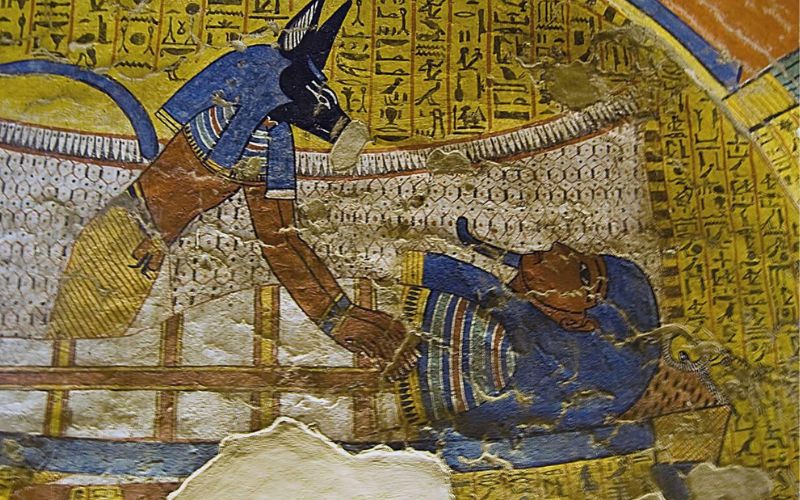
Egyptian mummies facts continue captivating humanity thousands of years after ancient embalmers perfected their craft. These remarkably preserved bodies represent far more than archaeological curiosities; they’re profound connections to our shared human past.
The ancient Egyptian mummification process demonstrates extraordinary sophistication in chemistry, anatomy, and religious philosophy. From the elaborate Egyptian royal mummies of pharaohs to humble commoner remains, each mummy in Egypt tells stories of individual lives, cultural beliefs, and civilization’s achievements.
Key Takeaways About Egyptian Mummies:
- Religious Significance: Mummification reflected deep beliefs about death, resurrection, and eternal life.
- Scientific Marvel: The preservation process represented an advanced understanding of chemistry and anatomy.
- Cultural Importance: Mummification unified ancient Egyptian society across social classes.
- Modern Research Value: Mummies provide unprecedented insights into ancient health, genetics, diet, and lifestyle.
- Enduring Fascination: These preserved remains continue inspiring scientific research, education, and cultural interest.
Real Egyptian Mummies Today: Whether viewing mummies in Egypt museums or studying mummification facts for kids in classrooms, these ancient preserved bodies bridge past and present, reminding us of humanity’s universal desire to transcend mortality.
The mummies of ancient Egypt stand as testament to a civilization that achieved remarkable cultural, scientific, and artistic heights. As we continue discovering Egyptian mummies found recently and applying modern scientific techniques to ancient remains, our understanding of this fascinating civilization deepens.
Are mummies real? Absolutely! and they remain one of history’s most valuable resources for understanding human civilization’s journey.
Visit Egypt: Experience Ancient Mummification History
Planning a trip to Egypt? Discover the land of pharaohs, pyramids, and Egyptian mummies firsthand!
Egypt Vacation Packages for USA Tourists offer comprehensive experiences including:
- Guided tours of the Valley of the Kings where pharaoh mummies were discovered.
- Egyptian Museum visits featuring Egyptian royal mummy collections.
- Luxor Mummification Museum exploring ancient preservation techniques.
- Ancient temple tours, including burial sites and necropolis areas.
Egypt Nile Cruise Itinerary Options:
- Multi-day Egypt river cruises visiting ancient sites.
- Stops at ancient Egyptian temples and tombs along the Nile River.
- Expert Egyptologist guides explaining ancient Egyptian mummification history.
- Comfortable accommodations in Egypt with authentic Egyptian adventures.
Egypt Day Tours for in-depth exploration:
- Great Pyramids of Giza and the Great Sphinx of Giza.
- Valley of the Kings mummy discovery sites.
- Egyptian Museum Cairo with mummy halls.
- Saqqara (Egypt ancient necropolis) and ancient burial grounds.
Experience the magic of ancient Egypt where mummies were made, pharaohs were buried, Egyptian mummies facts come to life. Book your Egyptian adventure today!

